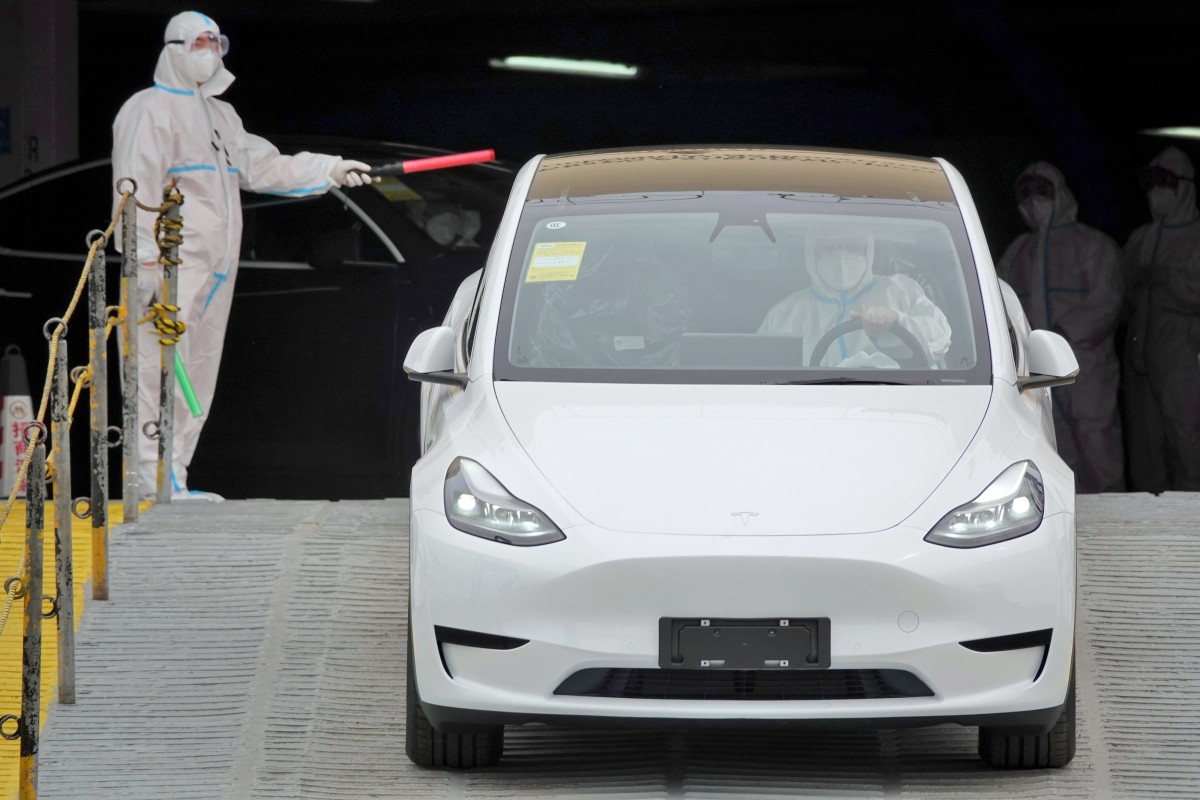
It's another week, and analysts are keeping their eyes on Tesla (TSLA) . Ford's (F) latest EV moves garnered a hefty reaction, a Chinese automaker was under close watch, and others reacted to Uber's (UBER) new partnership with GM's Cruise. (GM)

A Good Thing for a Bad Tesla
Despite being an American automaker, Elon Musk's Tesla has been caught up in the European Union's massive tariff situation.
On June 12, the European Commission announced that starting on July 4, Chinese EVs imported into the EU will face additional tariffs of up to 38.1% on top of an existing 10% duty on all auto imports. While the penalties seem stiff, not all Chinese automakers will bear the full brunt.
BYD, Geely, and state-owned SAIC were given individual tariff rates thanks to their cooperation with the EC's investigation.
Related: Tesla gets special treatment with EU's Chinese EV tariffs
As a result, vehicles from BYD are subject to a 17.4% tariff in the EU, while Geely vehicles, including Volvo and Polestar models made in China, get a 20.1% tariff. SAIC, the current owner of British heritage brand MG, will face the maximum 38.1% tariff.
Tesla's involvement is due to the outsized role of Tesla Shanghai, the Chinese operations of the namesake automaker. Tesla's Shanghai Gigafactory makes the Model 3 and Model Y for the Chinese domestic market and other regions, including the EU.
On Tuesday, August 20, the European Commission said it plans to enforce a 9% tariff on Teslas imported from China. EU officials say this percentage is fair due to Beijing's lessened involvement in foreign-owned companies.
Analysts reacted positively to the news.
Baird analyst Ben Kallo said in a research note the same day that the rate was better than analysts had feared. Kallo noted that the 9% that Tesla will face will have little impact compared to other automakers (e.g., BYD's 17.4% and SAIC's 38.1%.).
The 9% tariff rate also aligns with expectations from Barclays analysts. Analyst Dan Levy wrote in a note published on August 20 that the combined 19% is better than domestic Chinese automakers.
Barclays' Dan Levy maintained an Equal Weight rating and a $220 price target on Tesla stock, while Baird's Ben Kallo reiterated an Outperform rating and a $280 price target.

XPeng's unextraordinary run
On August 20, Chinese EV automaker XPeng (XPEV) reported second-quarter 2024 losses and revenue that missed analyst's expectations. Last month, Xpeng signed a technical agreement with Volkswagen, which helped soften the impact of its losses.
In a statement, XPeng Co-President Dr. Hongdi Brian Gu said that the company's cost-savings through "technical improvement and revenues from technical collaboration in [its] strategic partnership with Volkswagen" has helped it boost its profit margin; however, this was not enough in the eyes of analysts. Additionally, XPeng executives laid out a timeline of new models that will be released from the second half of 2024 through 2026, plans to enter new markets, and additional development in autonomous car technology.
However, Xpeng is a special outlier compared to the rest of the Chinese automotive sector, with its stock suffering a 52% price drop from the beginning of the year, compared to just 17% with its competitors. With this in mind, analysts at several Western firms lowered their price targets.
More Automotive:
- The Toyota Crown is a masterclass in cheap, quiet luxury
- Ford making radical change that might anger loyal consumers
- Gavin Newsom's 'EV mandate' is under U.S. Supreme Court threat
JPMorgan analyst Nick Lai lowered his firm's price target on XPeng. Despite the positive news about its partnership with VW, Lai's change for XPeng from $9 to $8 and Neutral rating was influenced by overly optimistic outlooks on sales volume and margins for the rest of 2024.
In a research note on August 21, Barclays analyst Jiong Shao also lowered his price target on XPeng to $7 from $8 and kept an Underweight rating on its shares, noting that with new models on the way, the automaker will see increased spending and additional losses in the second half of 2024.
Bank of America analyst Ming-Hsun Lee reiterated his Buy rating on XPeng but lowered his price target from $11 to $10. In his note on August 21, Lee's optimistic view of the Chinese automaker was fueled by its expanding sales outside of the People's Republic, which accounted for a significant amount of its volume sales. The company is expected to grow in important regions like Europe, where it is positioned as a high-end luxury brand.
Citi analyst Jeff Chung also kept his neutral rating of XPeng but lowered the firm's price target from $8.30 to $7.60.

The Blue Oval circles back around
To some outside observers, Ford's electric vehicles division, known internally as Model-e, has been a bit of a white elephant for the Dearborn-based automaker led by CEO Jim Farley.
Though products like the Ford F-150 Lightning pickup truck, the Mustang Mach-E crossover, and the E-Transit commercial van helped elevate the brand to the number 2 EV brand in the U.S., right behind Tesla, the portfolio of EVs has also taken a toll on their bottom line.
In Q2 2024, Ford's Model-e division reported an EBIT loss of $1.1 billion. However, on August 21, Ford executives revealed a game plan that would shift its strategy regarding electrification, prioritizing products that can eventually make the automaker money.
Related: Ford's EV plan may be Toyota's worst nightmare
In a move that will cost the brand $1.9 million, the Blue Oval is shifting from three-row EV crossovers to three-row hybrids, making hybrid versions of the popular Ford Super Duty pickup truck and going all-in on the next generation of smaller electric vehicles, which will be headed by a mid-size pickup truck coming in 2027.
"This is really about us being nimble and listening to responses from our customers," Lawler told Automotive News in a statement.
"We looked where the segment was evolving, the amount of competition, the customer needs, and then, the size of the battery that needs to go in a pure EV, the cost structure, the pricing, we could not put together a vehicle that met our requirements to be profitable in the first 12 months of launch."
The announcement is good news for analysts. In a note published on August 22nd, Bank of America analyst John Murphy noted that the Blue Oval is "turning toward the light," noting that its focus on strengthening the core of its brand—pickup trucks, commercial vans, and SUVs—presents good opportunities to grow its earnings reliably.
Bank of America maintained its Buy rating on Ford and kept its price target of $20.

Uber (and Cruise) everywhere
On August 22, the multinational technology and transportation company Uber introduced what it called a "multiyear strategic partnership" with Cruise, which will offer rides in its autonomous vehicles through the Uber ridesharing application in 2025.
According to Uber and Cruise CEOs, the partnership is intended to expand the reach of autonomous vehicles to as many people as possible. By partnering with Uber, the ride-sharing application with the widest user base, Cruise is able to cast the widest net for potential customers.
"Cruise is on a mission to leverage driverless technology to create safer street and redefine urban life," said Marc Whitten, CEO of Cruise. "We are excited to partner with Uber to bring the benefits of safe, reliable, autonomous driving to even more people, unlocking a new era of urban mobility."
Related: Uber robotaxi push may be next step in sinister pattern
Analysts say this partnership could open a new door for both Uber and autonomous vehicle companies.
In a note on August 22, Evercore ISI analyst Mark Mahaney wrote that he expects Uber to continue expanding robotaxi offerings on its ride-share platform as a way to expand its business alongside companies like Cruise and Waymo.
"Uber is the largest ride-share demand aggregator," Mahaney said. "So AV companies looking to scale their businesses, increase the utilization of their fixed assets, and generate a good return on their AV investments will seriously consider partnering with Uber."
As a result, these partnerships can result in "more bookings and more revenue and more profit."
At the same time, Bank of America analyst Justin Post wrote on Thursday that the Cruise partnership "reinforces" that robotaxi operators like Waymo will see the value in partnering with someone like Uber in order to increase rider demand.
However, there is one potential robotaxi company that he doesn't see as part of the mix.
"At this time, we are not expecting Tesla to partner with Uber," Post said. "But we think the growing competition between Amazon's Zoox, Cruise, Waymo, Tesla, and others could drive more interest in partnerships."
Bank of America holds its buy rating for Uber, while Evercore ISI retains its positive outperform rating.
Related: Veteran fund manager sees world of pain coming for stocks







